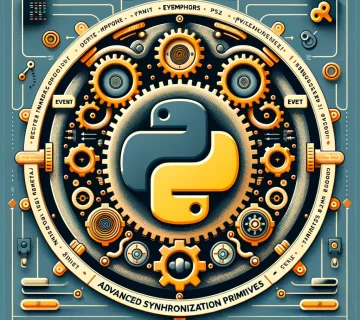Python, one of the most popular programming languages today, is renowned for its readability and simplicity. In this post, we delve into the basics of Python syntax, including variables, operators, and comments. Understanding these concepts is crucial for anyone starting their journey in Python programming.
What is Syntax in Programming?
Syntax in programming is akin to grammar in a language. It comprises the rules and structure that govern how code is written and interpreted by the computer. Just as grammatical errors can lead to misunderstandings in human languages, syntax errors in programming can prevent a program from executing correctly. Python’s syntax is particularly user-friendly, making it an ideal language for beginners.
Variables in Python
Next, we will explore the concept of variables in Python. But before that, let’s understand why syntax is crucial when dealing with variables:
- Defining Variables: In Python, you can create variables simply by assigning a value to a name. For example,
x = 5creates a variable namedxwith the value5. Python’s dynamic typing allows you to reassign different data types to the same variable without an explicit declaration. - Variable Names: Python has rules for naming variables, such as starting with a letter or underscore and containing only letters, numbers, and underscores.
- Case Sensitivity: Python is case-sensitive, meaning
variable,Variable, andVARIABLEare three different identifiers. - Best Practices: Following naming conventions and descriptive names makes your code more readable and maintainable.
Operators in Python
Operators are special symbols that carry out arithmetic or logical computation. Python offers various types of operators:
- Arithmetic Operators: For mathematical operations like addition (
+), subtraction (-), multiplication (*), etc. - Comparison Operators: To compare values, such as equal to (
==), not equal to (!=), greater than (>), etc. - Logical Operators: Used for logical operations, like
and,or, andnot.
Comments in Python
Comments are crucial for making your code understandable. They are ignored by Python’s interpreter and are used to explain code segments, state the purpose, or note modifications. Single-line comments start with a #, and multi-line comments can be enclosed in triple quotes ("""Comment""").
Up Next
In the upcoming posts, we will delve deeper into variables in Python, exploring their types, scope, and best practices in detail. Stay tuned for a comprehensive guide to mastering variables in Python!
Conclusion
Understanding Python’s syntax is the first step in becoming proficient in the language. Remember, the key to mastering Python lies in practice and continuous learning.
Assignments/Tips:
- Try It Yourself: Create a simple Python script that includes variables, operators, and comments. Experiment by changing values and operators.
- Common Mistake: Avoid using Python reserved keywords as variable names. This can lead to unexpected errors.





No comment